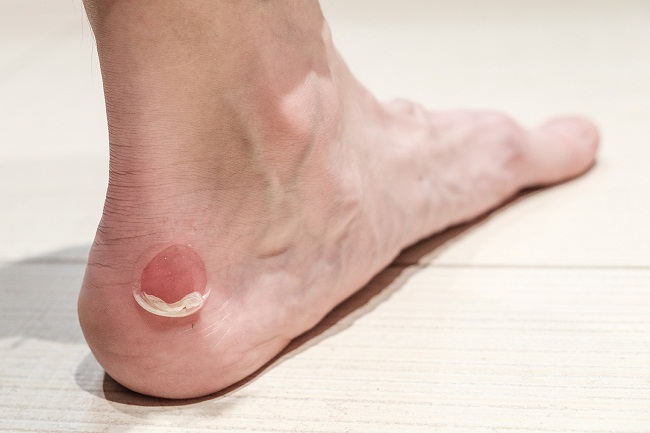Foot Care for Blisters in Diabetes
Diabetes causes both foot and skin problems. Reduced adaptive immunity and poor blood flow to the feet cause blisters in the feet. These are called diabetic blisters and need aggressive management in order to avoid diabetic foot infections.
What are Diabetic Blisters?
Blisters on skin, especially on the feet, are common in people with diabetes. These blisters are eruptions of the skin that are usually painless. Though they occur rarely, they are a cause of concern as they can lead to infections and ulcers, especially diabetic foot ulcer.
Blisters also occur on the feet as a result of friction, and pressure.Wearing ill-fitting shoes, and walking barefoot generally cause blisters. These blisters turn into sores and when the sores are not treated properly, they can ultimately lead to diabetic foot ulcer.
Symptoms of Diabetic Blisters
- Formation of bumps and lesions as in the case of skin burns
- Bumps that contain clear fluid and cause itching
- Blisters that are painful with burning sensation
People with diabetic neuropathy, diabetic nephropathy, and people with peripheral artery disease are prone to get diabetic blisters. However, it is known to occur in people with uncontrolled diabetes, people who wear ill-fitting footwear, and people with injuries. These are called friction blisters.
Treatment of Blisters
The goal of treatment in the case of diabetic blisters and friction blisters on the feet are to avoid infection and ulceration.Blisters need medical attention when there is redness with a warm feeling, pain, and fever along with the blisters.
Though blisters are known to subside within a few weeks, they can be painful and cause irritation. For this purpose, saline compresses are placed to relive irritation. To treat infections that arise out of these blisters, antibiotics are prescribed. These can be topical and oral. Sometimes, steroidal medications are also prescribed if the pain is severe.
Note: It is very important never to puncture these blisters at home. Aspiration should be done under medical supervision where sterile equipment is used.
Prevention of Diabetic and Friction Blisters on Feet
- Examine your feet daily and look for changes in skin
- Wear proper diabetes footwear with absorbent socks
- Do not walk barefoot even at home
- Wash your feet and dry them properly
- In dry weather, apply moisturizer to your feet
- Trim toenails regularly
In case you observe any redness, swelling, pain, and warm feeling on an area of the foot, consult your diabetes doctor or a podiatrist











